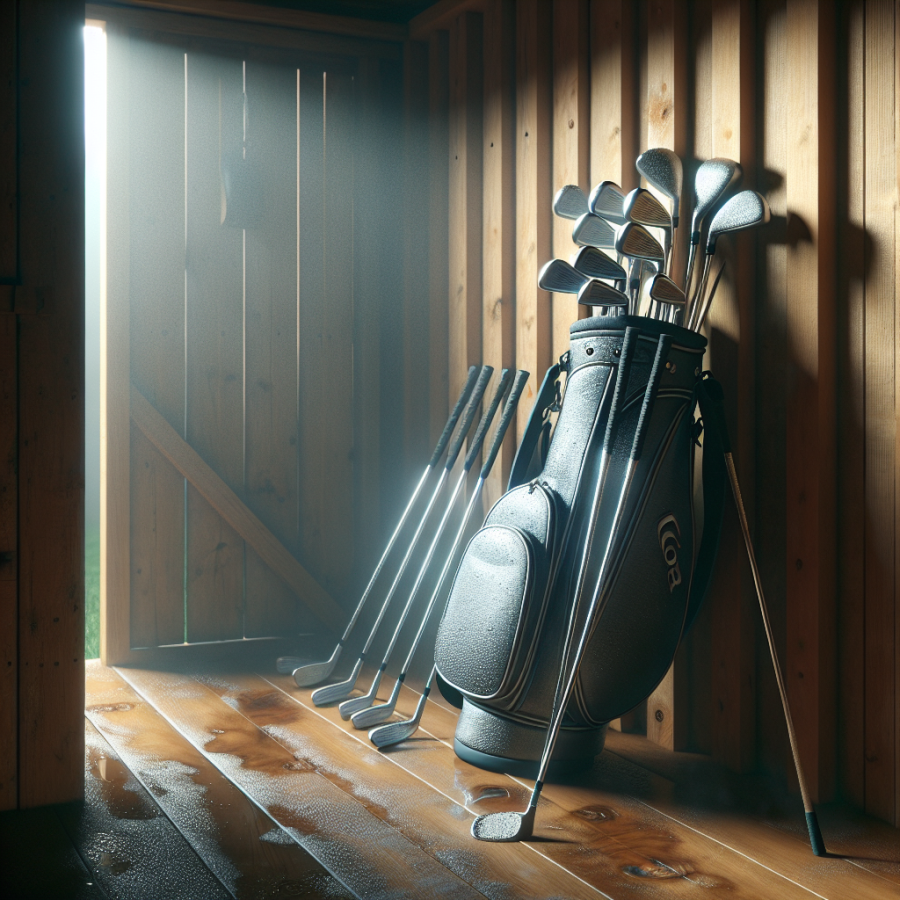Understanding the Factors: How Rust Develops on Golf Clubs
Rust is a common enemy to your precious golf clubs. So, it's crucial to know why and how rust develops on golf clubs to prevent them more effectively. Shedding light on this can help those who are struggling to keep their treasured golf clubs rust-free.
The science behind rust formation is all about iron, oxygen, and moisture. When golf clubs, primarily made of iron, are exposed to both oxygen and moisture, a chemical reaction occurs, forming a reddish-brown layer called rust. While it may seem superficial, the problem is that the rust may gradually weaken the golf club's structure, potentially affecting its performance over time.
One crucial factor that promotes rust development is the environment. If you store your golf clubs in a damp, humid shed, rust formation can be quite rampant. This condition often occurs to those consistently playing in rain or on early dewy mornings and failing to dry their clubs properly before storing them. This prolonged exposure to moisture triggers the rust formation process.
Temperature is another factor to consider. Warmer conditions can speed up the rust formation process because they promote humidity and condensation. This reaction happens particularly in areas with fluctuating hot and cold temperatures and high levels of moisture.
Apart from the environmental conditions, the material of the clubs also plays a significant role. Some golf clubs are made from foundry irons or steels, susceptible to rust. In these cases, moisture will directly react with the metal and start rusting. On the other hand, clubs made from stainless steel or other rust-resistant materials are less likely to rust, especially with proper care.
Maintenance measure is another determinant of rust development on golf clubs. Neglecting to clean the clubs after each use invites rust. Ground-in dirt or grass can trap moisture against the club's surface, which encourages rust to form. Moreover, storing your clubs in a damp golf bag also exposes them to rust-causing conditions.
To conclude, it's not a question of how safe is your shed, but how safe is your maintenance routine against rust. Recognizing the various factors leading to rust formation can help golf enthusiasts in their quest for well-maintained, rust-free golf clubs. It's always recommended to store your golf clubs in a dry, controlled environment and keep them clean and well-maintained.
Read also:
Becoming Legends: The Who's Who of Soccer for Liverpool
Effective Measures for Protecting Your Golf Clubs in Your Shed
Protecting your golf clubs from rust is of paramount importance if you wish to extend their lifespan and maintain their performance. For many golfers, the shed is the preferred storage space for their clubs. However, it can present some challenges, notably the risk of rusting due to various elements such as moisture and airborne debris. Here are some effective measures you could consider to keep your clubs safe and rust-free in your shed.
The first step is to correct storage. Many people simply throw their golf clubs into the shed without taking appropriate care. Golf clubs should ideally be stored in a vertical position with the clubhead at the bottom. This position prevents any unnecessary stress on the club that could result in damage. Moreover, using a golf bag with dividers to store your clubs can keep them separate and prevent them from hitting against one another, causing nicks and scratches.
Coating your golf clubs with protective oil or wax can also help to stave off the rust. These substances create a protective barrier against moisture, which is the number one cause of rust in metallic items. You can find special oils or waxes designed for golf clubs that will not interfere with their playability.
It’s also crucial to control humidity levels in your shed. High humidity can lead to a build-up of moisture, which can then lead to rusting. Dehumidifiers are an excellent solution to reduce humidity levels and they can help to create a more suitable environment for your golf clubs.
Good airflow in your shed can also prevent excessive moisture concentration. Ventilation can be improved by deploying vents, exhaust fans, or simply cracking open a window if the weather permits.
Regular cleaning of your golf clubs is another effective measure to prevent rust. Sporting goods, such as golf clubs, are often made from materials that are vulnerable to the elements. Regular dusting and cleaning can keep debris and moisture from gathering on your clubs and causing rust.
Temperature changes can also cause harm to your golf equipment. Storing them in a place that is not subject to drastic temperature swings is ideal. Therefore, if your shed experiences significant temperature variations, it might be worth insulating it or seeking a more controlled environment.
Implement weatherproofing measures to protect your clubs further. If your shed roofs or walls have leaks or gaps, it's time to fix them. Rain or snow entering your shed can significantly spike the humidity levels, leading to quicker rust formation.




